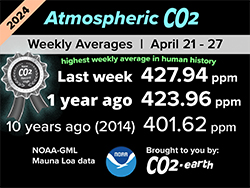Updates on the EOS blockchain
EOS Blockchain news
Welcome to Hoken Tech
In the world of cryptocurrencies and especially blockchains, we see that these are not static and fixed systems over time. In fact, most blockchains evolve and update over time, introducing various improvements and integrations.
These blockchain upgrades are called softforks or hardforks, depending on whether the update’s impact is simpler or more substantial.
EOS EVM Updated
Let’s start with a look at the EOS EVM, where a hard fork will be implemented in early August to integrate several updates and align with the latest developments on the Ethereum blockchain to have the same benefits.
Recall that the EVM (Ethereum Virtual Machine) allows running smart contracts based on Ethereum. Considering that this system has been used for various blockchains to make smart contracts compatible, there is a need to update the underlying code with the various updates that have been brought to the Ethereum blockchain. This occurs after several months to allow time to verify and check for any errors or bugs.
The new EOS tokenomics
When a blockchain is designed, a tokenomics model is also implemented, i.e. how the tokens will operate within it, how they will be released and other parameters. Regarding the EOS blockchain, it was originally conceived to have a total supply of 10 billion, with an annual inflation percentage to be distributed to Block Producers for their support of the blockchain.
Obviously, this type of tokenomics can vary over time to adapt to new possibilities. In the case of EOS, it has been decided to reduce the total supply to just 2.1 billion EOS, in order to make token distribution more effective and directly increase its value, as there will be fewer tokens in circulation.
The new REX 2.0
The EOS blockchain also has a structure for locking EOS within the blockchain itself, called Resource Exchange (REX), where users can lock their EOS in this pool and receive interest in return.
With the new update that came into effect in early July, the protocol has been slightly updated, increasing the token unstaking period to 21 days (previously 4 days), and the protocol has been given an incentive of 315 million EOS, which will be distributed as interest over 10 years to all users who will use and deposit EOS in REX.
REX 2.0 Guide
To participate in the new REX, a simplified interface has been created compared to the previous version, where you can connect your account and stake your EOS by accessing the following link:

Currently the APY is just over 50% and this value will decrease as the pool has more EOS, eventually dropping to about 4%, and as mentioned, after a period of 21 days, we will be able to redeem our accrued EOS.
In addition, for those who had already deposited EOS in REX, they simply need to move them to the “Savings” pool and to do this we can use the interface of a block explorer (https://bloks.io/rex?tab=savings)

The EOS Spring Update
Finally, the next important update that will occur on the EOS blockchain, this one much more important and structured, is in fact a hard fork upgrade, where there will be several improvements such as:
instant finality, i.e. processing and closing a block in a maximum of 0.3 seconds (currently the procedure takes 120 seconds)
enhancing security, integrating and fixing various blockchain parameters
enhancing cryptographic techniques, aggregating signatures and thus allowing the development of zero knowledge systems
Conclusions
As we have seen, the EOS blockchain is more alive than ever and these and other updates show activity on the part of developers to bring and enhance the project, which we recall, is promoted by the EOS community as there is no private company behind it.
These updates are also supported by the EOS Network Foundation which provides guidance on the direction to follow to improve and enhance this blockchain.
nft, hoken tech, blockchain, cryptoart, eos, nft art, artificial intelligence, ai, watch authentication, crypto artist, nfts, web3, nft game, web3 game, videogame, nft distributor, videogame blockchain







